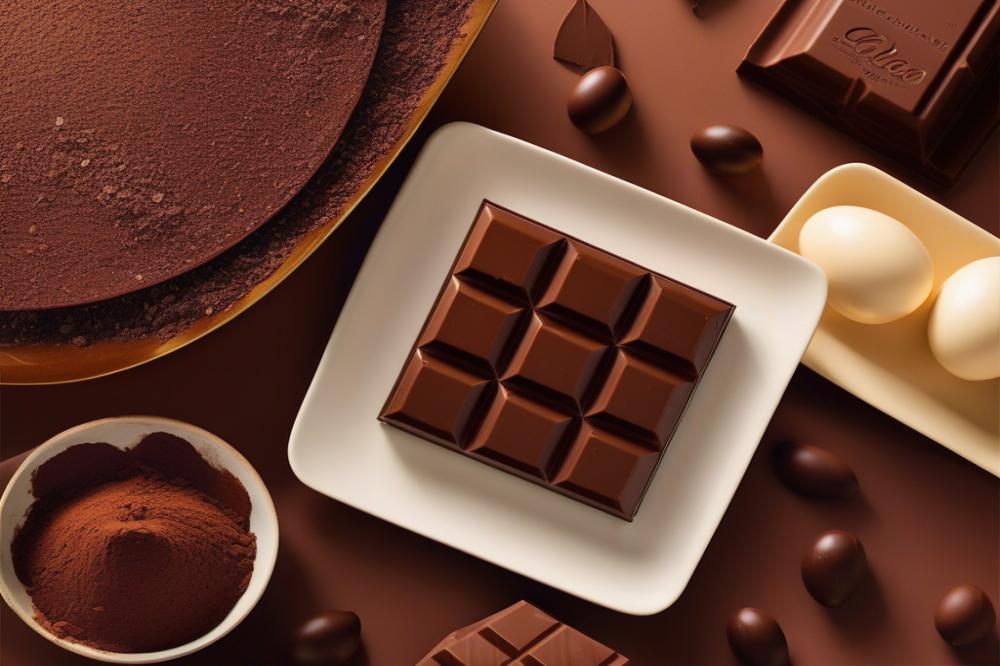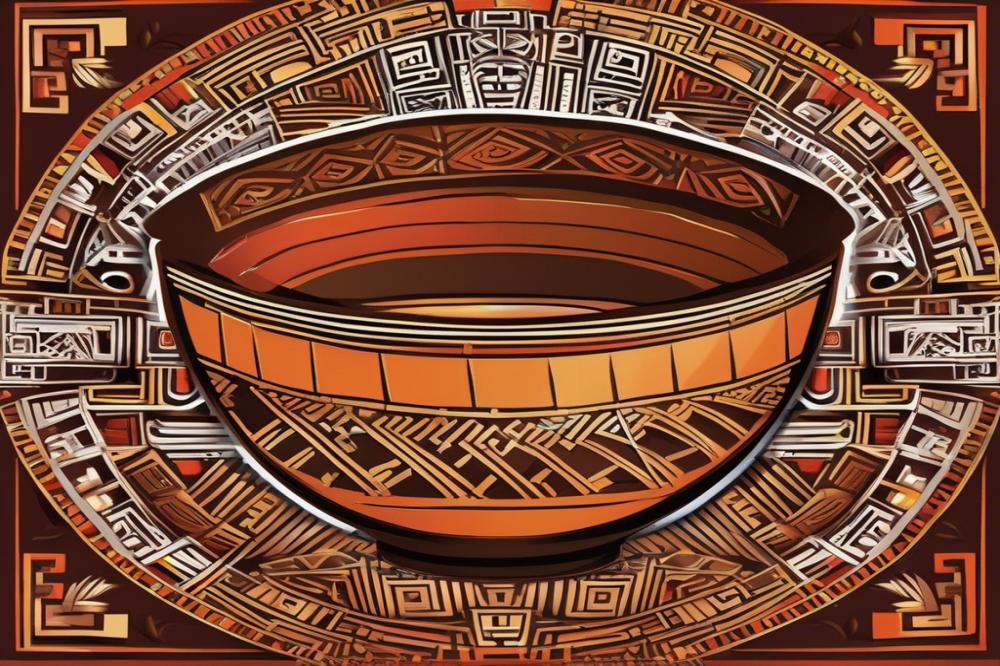Introduction
In today’s world, chocolate holds a special place in modern culture. It is more than just a sweet treat; it symbolizes comfort and celebration. Many people enjoy it during holidays and special occasions, making it a staple in our lives. The mouthwatering flavor has made it a favorite among millions and brought joy to countless celebrations.
Understanding how this beloved product became a global commodity reveals fascinating insights into its journey. From its origins in ancient Mesoamerica, where cacao was revered, to its current status as a luxurious item in shops worldwide, chocolate has come a long way. Its rise reflects broader trends, including the effects of globalization and the intricate web of trade dynamics that shape how we consume chocolate today.
Diving into its history helps us appreciate how production and consumption practices have evolved. Different countries have developed various marketing strategies that influence how people enjoy this treat. Additionally, issues such as fair trade and sustainability play a significant role in the agriculture behind cacao cultivation. Some consumers seek to support ethical practices through their purchasing decisions. This growing awareness helps bring attention to the impacts of our choices on the economy of cocoa-producing nations.
To fully comprehend chocolate’s journey, one must recognize its cultural significance across the globe. It has shaped traditions and relationships, influencing everything from local festivals to culinary innovations. Moreover, examining trade dynamics around it allows us to see not just the product but also the lives of those who produce it. Enabling a deeper understanding of these aspects enriches our perspective on this cherished commodity.
The Historical Roots of Chocolate
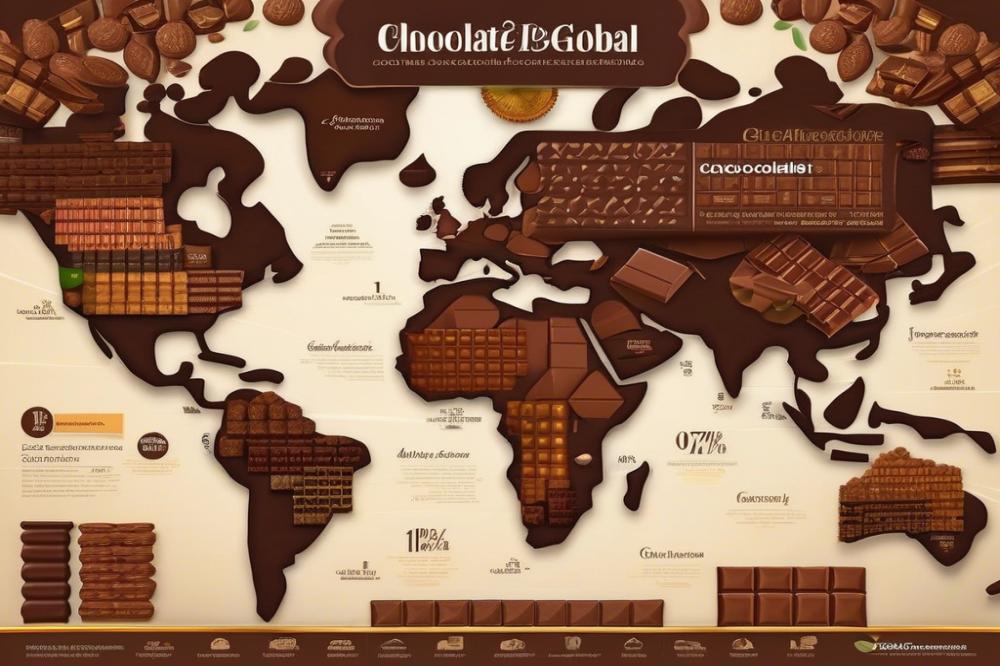
Cacao has rich origins in Mesoamerica, where it was first cultivated by ancient civilizations. The Maya and Aztec people played a significant role in this early history. They harvested cacao beans from the trees found in tropical rainforests. These beans were precious and held great cultural significance. For the Maya, cacao was not just food; it was also part of rituals and celebrations. The Aztecs also valued it highly, using it in drinks that were reserved for nobility.
As these civilizations thrived, cacao was transformed into a beverage. They mixed ground cacao with spices and water to create a frothy drink. This unique concoction became a symbol of status and wealth. It wasn’t uncommon for cacao to be used as currency in trade. The value placed on these beans laid the groundwork for their future in global trade.
The growth of cacao farming has also influenced the economy in many producing countries. However, this expansion has not always been fair. Issues concerning labor practices and fair trade emerged alongside increasing consumption. Many farmers who grow cacao do not receive a fair wage. This imbalance has sparked discussions on how to support sustainable agriculture and ethical sourcing. Today, consumers are more aware and seek brands that commit to fair trade practices.
Globalization further played a role in the transformation of cacao into a worldwide commodity. As transportation and communications improved, the reach of cacao expanded across continents. Chocolate has become an integral part of various cultures. Events like holidays and special occasions see increased consumption. Marketing campaigns often highlight the joy of sharing this beloved treat. The impact of this journey from Mesoamerican beverage to a global favorite illustrates the complex history of cacao.
The Evolution of Trade and Economics
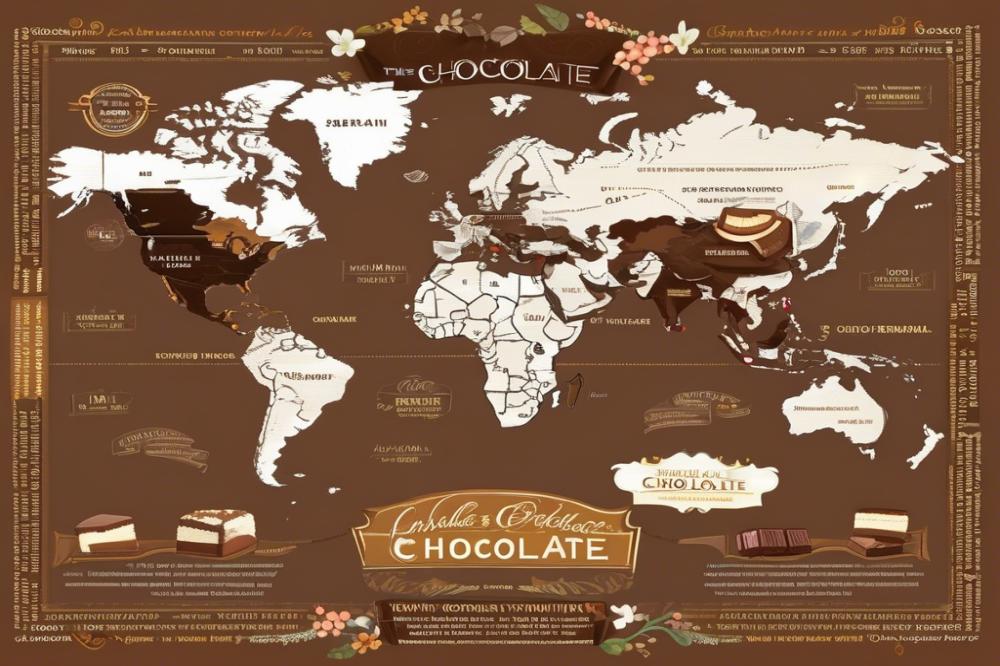
The journey of cacao beans began long before they became a beloved treat. Early trade routes connected various civilizations in Mesoamerica. The Olmecs, Maya, and Aztecs valued cacao beans highly. They used them as currency and for ceremonial drinks. These early societies understood cacao’s importance in trade long before it reached Europe.
Colonization had a profound impact on cacao production. European powers, driven by the demand for luxury items, expanded cacao cultivation. By establishing plantations in tropical climates, they transformed the agriculture of cacao. This shift allowed for large-scale production. The sugar and cacao trade became intertwined, fueling the economy of empires. As a result, the global demand for this product surged dramatically.
Marketing strategies cleverly positioned cacao products as luxury items in European society. In the 17th century, royal courts began to indulge these exotic beverages. The wealthy eagerly showcased their access to chocolate drinks. Social gatherings and festivities featured chocolate prominently. This set the stage for its cultural significance in European life. Eventually, consumption spread from the elite to the middle class, marking a shift in societal habits.
Globalization played a crucial role in the rise of cacao as a commodity. Nations began recognizing the economic potential of cacao trade. Fair trade practices emerged as awareness grew. Consumers demanded ethical sourcing and better treatment for farmers. This movement highlighted the need for sustainable practices in the industry. Marketing efforts shifted towards promoting these values.
The rich history of cacao continues to influence today’s economy. Modern chocolate makers focus on quality, sustainability, and ethical standards. This evolution fosters a market where consumer choices matter. As cacao beans crossed borders over centuries, they transformed from a regional delicacy to a global staple. Understanding this fascinating journey enriches our appreciation for the product.
Globalization and the Chocolate Industry
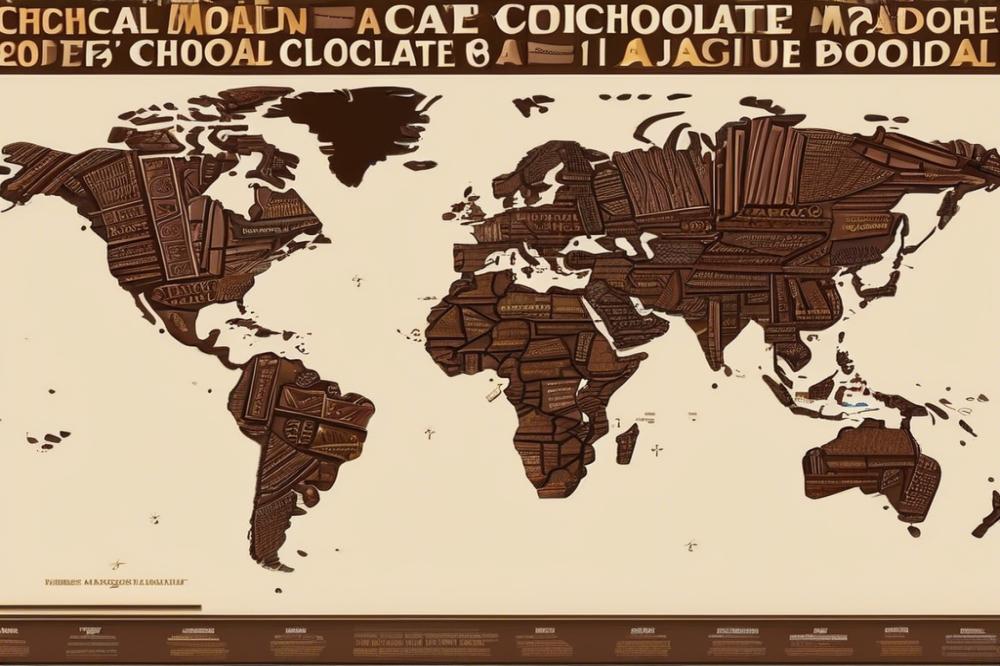
The journey of chocolate began long ago, deeply rooted in history. From its early days in Mesoamerica, cacao spread far and wide across continents. As explorers ventured into new lands, these travelers introduced cacao to Europe, where it transformed into a beloved treat. This was the beginning of globalization and trade, enabling Cacao to reach diverse cultures.
Modern agricultural practices have greatly changed the way cacao is cultivated. Farmers now use advanced techniques and technology to increase yields. These innovations lead to more efficient production, meeting the growing demand for chocolate. Sustainable farming methods have come into play, allowing for better management of resources. Such practices also focus on fair trade, helping farmers earn a fair wage.
Market dominance has shifted over the years with the rise of multinational companies. These corporations have a significant impact on the global economy. They engage in extensive marketing strategies to draw in consumers, emphasizing quality and taste. Brand recognition has become vital in today’s competitive landscape. With such power, these companies determine much of the market flow and pricing.
Consumers are now more aware of the ethical implications of their choices. Understanding the cultural significance of cacao cultivation leads to a greater appreciation for its origins. Many buyers seek out fair trade products, wanting to support sustainable practices. There is an increasing demand for transparency, making sellers prioritize responsibility in their sourcing.
The relationship between consumption and production continues to evolve. As cacao is integrated into various products, the industry faces challenges and opportunities. Ensuring a healthy supply chain is essential for the future. All these changes illustrate how interconnected the world has become, driven by a love for this cherished substance.
Cultural Significance of Chocolate

Chocolate in Different Cultures and Societies
Cacao has traveled through time and across continents, shaping societies in unique ways. Ancient civilizations, such as the Mayans and Aztecs, cherished it as a sacred drink. They believed that it held divine qualities. In Europe, it transformed from a bitter beverage to a sweet treat that symbolized luxury and indulgence. Each culture has added its own flavor and history to cacao. Today, it remains central to many communities worldwide, showcasing how food can unite us.
The Role of Chocolate in Traditions and Celebrations
Celebrations often feature this beloved treat. Birthdays and holidays bring people together over sweet delights. In some places, gift-giving revolves around chocolate, highlighting affection and care. Festivals celebrate various aspects of its production, honoring the hard work of farmers. Special occasions are marked with rich desserts or drinks, making them memorable. These traditions showcase the deep connections we share through food.
The Evolution of Chocolate Consumption Patterns Over Time
Consumption patterns have shifted dramatically throughout history. Industrialization changed how people access these cocoa products. Mass production made it affordable for many. Today, the demand for ethically sourced options, like fair trade, rises. Different marketing strategies emphasize quality, sustainability, and social responsibility. The economy surrounding cacao has grown, influencing global trade. Consumer awareness drives change in agricultural practices too. From indulgence to a focus on ethical consumption, this evolution reflects our changing values.
Fair Trade and Ethical Considerations
The Impact of Cocoa Farming on Local Economies
Cocoa farming plays a crucial role in many local economies. In countries like Ghana and Ivory Coast, this agriculture provides income for millions. Families depend heavily on cacao for their livelihoods. Unfortunately, the prices set by the global market can be very low. As a result, farmers struggle to make ends meet. This is especially true during tough seasons or when prices dip. The economic importance of cacao cannot be overstated. Many communities thrive thanks to this crop, yet they face constant uncertainty.
The Challenges Faced by Cacao Farmers
Farmers encounter numerous difficulties. They have to deal with fluctuating prices and extreme weather conditions. Aging cacao trees can reduce crop yields over time, impacting profits. Many farmers also lack access to modern farming techniques. Education on best practices could improve their harvests. Sadly, issues like child labor and unfair wages are common in cacao production. These problems often stem from poverty and limited resources. Farmers need support to address these significant challenges.
The Rise of Fair Trade Movements and Ethical Chocolate Sourcing
Fair trade movements emerged as a response to the struggles faced by farmers. They aim to create better trading conditions and promote sustainability. Through fair trade, farmers receive a price that reflects their hard work. This system not only supports their economy but also empowers communities. Ethical chocolate sourcing is gaining popularity among consumers too. Many people want to know where their products come from. They are increasingly choosing brands that commit to fair labor practices. Marketing these ethical brands helps to educate consumers. Awareness of the cultural significance of cacao also plays a part. As globalization continues, the demand for ethically sourced products grows.
Marketing and Consumer Trends
Branding and advertising play critical roles in shaping the chocolate market today. Companies invest heavily in creating memorable brands. Eye-catching packaging attracts consumers’ attention on store shelves. Clever advertisements build emotional connections with buyers. Many brands use storytelling to link their products with positive experiences, tapping into nostalgia and joy.
Current trends reflect changing consumer preferences. More people are looking for premium options. Craft chocolate has gained popularity, appealing to those who want quality over quantity. Dark varieties have surged in demand too. Shoppers now prioritize flavor and texture over simple sweetness.
Health consciousness intersects strongly with products in this segment. The rise of low-sugar varieties showcases this shift. Many consumers also search for options with added benefits, like antioxidants. Fair trade and sustainability are significant factors influencing purchases. Shoppers often support brands that focus on ethical sourcing and agriculture practices.
Overall, the history of cacao has transformed into a dynamic trade in today’s economy. As globalization continues to weave through different cultures, chocolate’s significance evolves. It represents more than just a treat; it embodies a lifestyle and an attitude towards health and ethics. Modern consumers want to feel good about their choices. They want to enjoy while also considering the impact on farmers and the environment.
Final Thoughts on Chocolate’s Evolution
The journey of chocolate as a global commodity is fascinating. It started as a simple drink in ancient Mesoamerica, evolved through trade routes, and transformed into the beloved treat we know today. Over centuries, this product crossed oceans and cultures, easily becoming a favorite worldwide.
Economic impacts are significant. Countries in West Africa, Central and South America grow cocoa beans. They rely on this crop for income and jobs. The industry also faces challenges. Farmers often earn low wages, and child labor can be an issue. As consumers, we must think about these factors when enjoying our favorite treat.
Culturally, chocolate symbolizes indulgence and celebration. It connects people, whether shared on holidays or given as gifts. Its rich history adds depth to its enjoyment, reminding us of the journey cocoa has taken.
Looking ahead, the future seems uncertain but promising. Sustainability is becoming crucial. Efforts to grow cocoa ethically can help protect farmers and the environment. Innovations in flavors and products might also appeal to younger generations. As we embrace these changes, we can cherish the legacy of chocolate in our global society. Together, we can create a better future for this treasured food.

